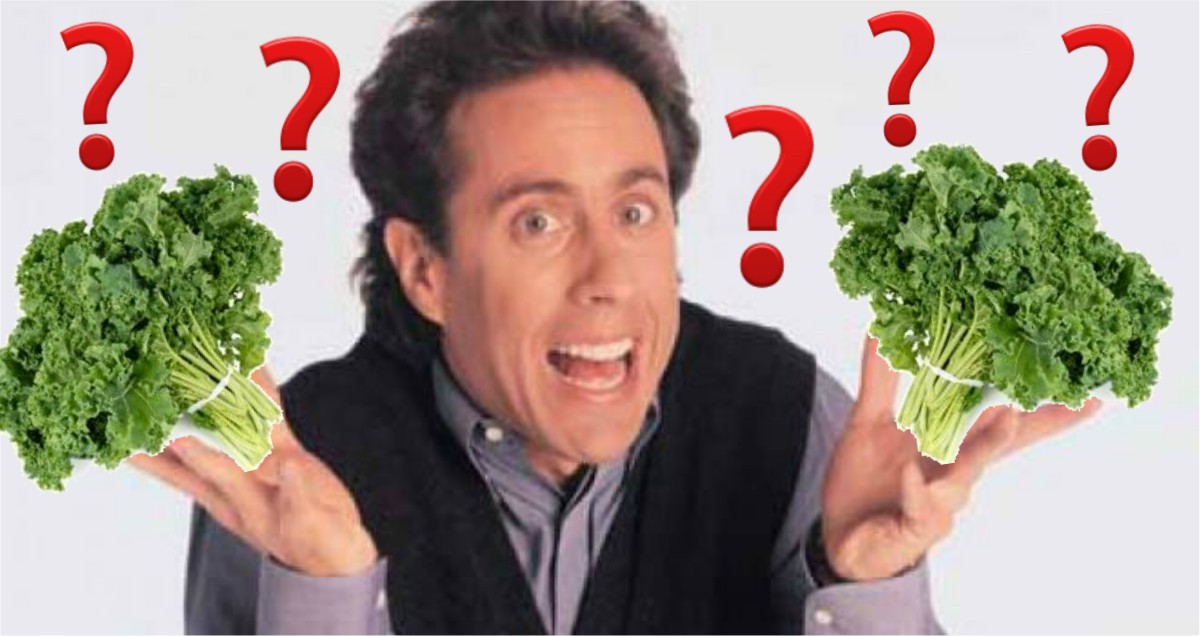What's the Deal with KALE?
This once-obscure veggie has become all the rage with health-conscious foodies across the globe. But is it really the amazing superfood that everyone claims it to be?

What exactly is kale?
Kale is a type of vegetable very similar to wild cabbage. It's grown on many continents and comes in several different varieties, three of which you can commonly find in supermarkets. It used to be one of the most common green vegetables consumed in Europe up until around the end of the Middle Ages.
In more modern days, the internet has revived its popularity once again by tagging it as a "superfood" for health-conscious eaters and dieters and claiming it to be a much more nutritious substitute than most other vegetables.
Is it really that good for you?
While it can depend on how you prepare it, the short answer is undeniably...yes!
Raw kale contains unparalled amounts of several vitamins and nutrients, most notably a generous amount of vitamin K, like many other collard greens, as well as hearty doses of vitamins A, C, B6, folate, and manganese. Vitamins C and B6 as well as fiber and potassium (which kale also contains plenty of) are proven to be essential for a healthy heart and useful in preventing heart disease.
Kale's fiber and water content can also aid with digestion, and its high levels of beta-carotene and vitamin C can contribute to healthier hair and skin.
We could keep on listing out the many nutrients and proteins that it contains and how those can benefit your body, but ultimately the thing to take away from its ingredients list is this: it's impressive. Even by vegetable standards!

But wait...
Before you go and stock your fridge full with kale, keep in mind: these nutrients and proteins are not exclusive to kale. There are still other means of nourishing your body with the supplements it needs, including other types of vegetables.
One more thing to keep in mind: if a recipe calls for boiling your kale, beware! When boiled, this superfood loses the majority of these incredible health-boosts. Instead, look for recipes that call for steaming, stir frying, or microwaving the veggie. These methods have a much less damaging effect on its properties, so you'll be able to enjoy nearly all the benefits of the green in its raw form – because, let's face it: not all of us enjoy kale in its natural, uncooked state!
So what now?
Although kale isn't the magical remedy that some would have you believe, its strinkingly rich nutrient and protein content makes it undeniably beneficial in boosting and enriching your body. And, because it's filled to the max with these dietary aids, it's much easier to get the amounts you need with kale than with many other veggies.
So go ahead and shamelessly jump on that bandwagon. Your body will thank you for it!
Did we mention how insanely versatile this superfood can be? Try out these 21 recipes to sneak a bit more kale into your life!
More steaming articles
 How Much Exercise Burns Off Your...
How Much Exercise Burns Off Your...
 You’ve been eating watermelons WRONG
You’ve been eating watermelons WRONG
 TURMERIC: Is it really all it's...
TURMERIC: Is it really all it's...
Chef Tips and Tricks
Tomatoes are delicious and a great part of a healthy diet. With our video we teach you the easiest way to quickly de-seed and dice a tomato, so that it's ready in no time!


Comment on this article